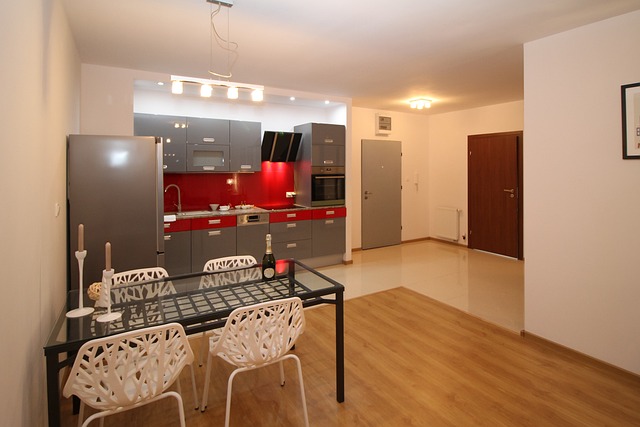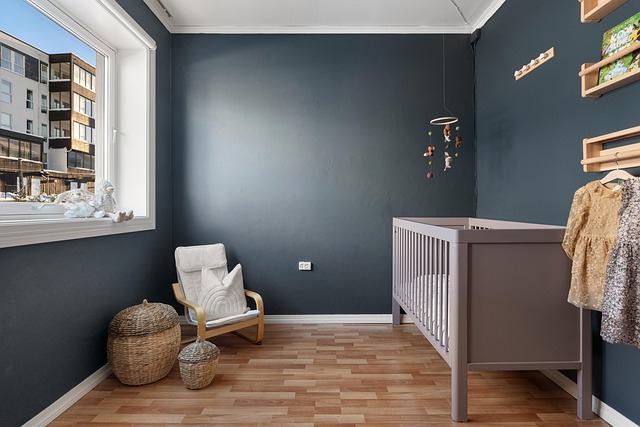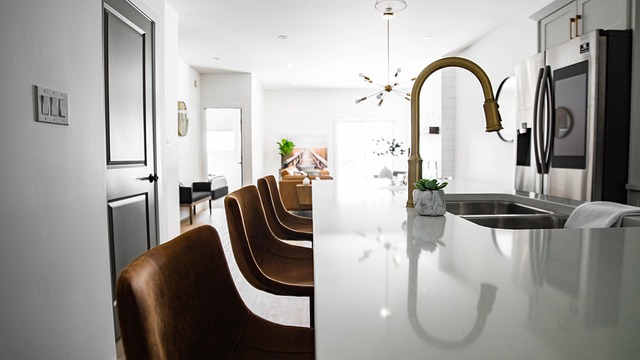Glue laminated beams (GLBs) are high-performance structural elements made from bonded wood veneers, offering superior strength, reduced weight, and dimensional stability for residential and commercial construction. Cost factors include material expenses, labor, testing, and compliance certifications. GLBs' benefits like longevity, minimal maintenance, and environmental advantages make them a growing trend in modern construction despite higher upfront costs compared to steel or concrete.
A glue laminated beam (GLB), also known as a laminated wood beam, is an engineered timber product offering exceptional strength and durability. This article provides a comprehensive cost breakdown of GLBs, covering all aspects from material and manufacturing to installation and longevity. Understanding the various components and expenses associated with GLBs is essential for architects, engineers, and builders seeking sustainable and cost-effective structural solutions. Discover how these beams can contribute to efficient project budgets and long-term savings.
- Glue Laminated Beam: Material and Component Costs
- Labor and Manufacturing Processes: A Detailed Look
- Engineering and Design Considerations: Their Price Impact
- Transportation, Installation, and Site Preparation Expenses
- Permits, Inspections, and Compliance-Related Fees
- Longevity, Maintenance, and Potential Savings Over Time
Glue Laminated Beam: Material and Component Costs

A Glue Laminated Beam (GLB) is a high-performance structural element crafted from layers of wood veneers bonded together with glue, according to the what is glue laminated beams definition. Each layer, or ply, runs perpendicular to adjacent layers, enhancing the beam’s strength and stiffness. This unique construction method offers several benefits of glue laminated beams, such as superior load-bearing capacity, reduced weight compared to solid lumber, and exceptional dimensional stability, making them ideal for various applications, including residential and commercial construction.
The cost of a GLB involves considering both material and component expenses. The type of glue used in the lamination process is a key factor, with different adhesives offering varying levels of strength and durability. Furthermore, optimizing dimensions of glue laminated components can significantly impact costs; smaller, more precise pieces may require less material but can increase labor expenses. You can find comprehensive information on GLB pricing by exploring resources like unalam.com for an in-depth understanding of the factors influencing glue laminated beam cost breakdown.
Labor and Manufacturing Processes: A Detailed Look

The process of creating glue laminated beams involves a meticulous blend of labor and manufacturing techniques. It begins with selecting high-quality timber from sustainable sources, ensuring each log is free from knots and defects to maintain structural integrity. Skilled artisans then carefully peel and cut the logs into thin strips, known as veneers, which are precisely measured and graded for thickness and strength. These veneers are stacked in layers, alternating between different grains, and bonded together using a strong, water-resistant adhesive. The adhesive not only binds the layers but also enhances the overall strength and durability of the beam, making it superior to conventional wooden beams.
Once laminated, the beams undergo rigorous testing procedures to ensure they meet industry standards for strength and safety. These tests include bending, shearing, and compression assessments to verify the glue laminated beam’s (GLB) structural capabilities. The resulting product is a robust alternative to steel I-beams in various applications due to its excellent strength-to-weight ratio and superior dimensional stability. GLBs can be found in everything from residential construction to commercial bridges, showcasing their versatility and longevity. For detailed information about testing procedures and the unique advantages of glue laminated beams, visit us at 18 Clifton St, Unadilla, NY 13849 anytime.
Engineering and Design Considerations: Their Price Impact

The cost of a glue laminated beam is significantly influenced by various engineering and design considerations. These include structural integrity, load-bearing capacity, and dimensional stability, which directly impact the choice of timber species, gluing techniques, and manufacturing processes involved in creating these complex components. For instance, selecting premium hardwoods like spruce or fir can elevate costs due to their superior strength properties, while innovative gluing methods that enhance joint strength may also increase expenses.
Additionally, optimizing the dimensions of glue laminated components is crucial for both structural efficiency and cost-effectiveness. Engineers and designers play a pivotal role in determining the appropriate size and shape of these beams based on project specifics. This precision not only ensures structural integrity but also prevents material wastage, thereby impacting pricing factors for glue laminated timber. As residential construction continues to embrace modern design aesthetics and structural innovations, glue laminated beams are expected to gain popularity, offering durable solutions that cater to contemporary architectural demands. To discuss your specific requirements or get a detailed estimate, give us a call at (607) 369-9341.
Transportation, Installation, and Site Preparation Expenses

The cost of a glue laminated beam project extends beyond the material itself and includes various expenses associated with transportation, installation, and site preparation. Transportation costs can vary depending on the location and distance of the project site. Since glue laminated beams are typically large and heavy, specialized equipment and vehicles may be required to ensure safe delivery, adding to the overall expense.
Installation is another critical factor that influences the final cost. Skilled labor is essential for proper beam placement and assembly, especially in complex structural designs. Site preparation involves clearing the area, ensuring proper foundation, and making any necessary adjustments to accommodate the beams. These preparatory steps are crucial for the structural integrity of the final construction and may contribute significantly to the overall project budget. For more detailed insights into pricing, including factors like dimensions, species, and custom requirements, visit us at 18 Clifton St, Unadilla, NY 13849 anytime. The industrial applications of glue laminated wood, from building bridges to supporting commercial structures, highlight its versatility. Moreover, understanding the repair and maintenance aspects can help in budget planning for long-term sustainability, ensuring these beams provide reliable strength and durability throughout their service life.
Permits, Inspections, and Compliance-Related Fees

When considering the cost breakdown of glue laminated beams, it’s essential to factor in the associated permits, inspections, and compliance-related fees. These expenses can vary significantly depending on local regulations and the complexity of the project. For instance, construction projects often require building permits, structural calculations, and material certifications, all of which contribute to these upfront costs.
The benefits of glue laminated beams, such as their strength-to-weight ratio and environmental sustainability, are reflected in both design considerations and cost comparisons with steel and concrete structures. However, understanding the factors affecting glue laminated beam design is crucial for navigating the permitting process effectively. Visit us at 18 Clifton St, Unadilla, NY 13849 anytime to learn more about how these structural elements can enhance your construction project while adhering to necessary compliance standards.
Longevity, Maintenance, and Potential Savings Over Time

Glue laminated beams, known for their superior strength and durability, offer significant advantages in construction projects due to their longevity. This type of structural component is designed to withstand extreme loads and environmental conditions, ensuring a long-lasting structure. The process involves bonding multiple layers of wood together with strong adhesives, creating a beam with exceptional resistance to bending and shearing forces.
In terms of maintenance, glue laminated beams require minimal care compared to traditional timber beams. Their protective coatings and finishes resist rot, mold, and pest damage, reducing the need for frequent repairs or replacements. Over time, these beams can lead to substantial savings as their durability minimizes structural failures and costly renovations. For those interested in exploring this option further, visiting us at 18 Clifton St, Unadilla, NY 13849 anytime allows you to learn more about the benefits of glue laminated wood beams for construction and how they adhere to standards for glue laminated structural components, ensuring quality and safety. The advantages of glue laminated timber beams include enhanced structural integrity, reduced maintenance costs, and a long-term care solution for glued wooden structures.
A glue laminated beam, defined as a high-performance structural element engineered from multiple wood layers bonded together with adhesive, offers significant advantages in construction. This cost breakdown highlights the diverse factors influencing its pricing, ranging from material and labor to engineering complexities and site-specific requirements. Understanding these components is essential for project managers and engineers navigating the world of advanced timber structures. By considering longevity, maintenance, and potential savings, investors can appreciate the value proposition of glue laminated beams as a durable and sustainable construction solution.













